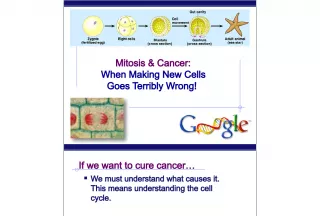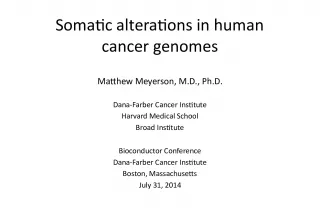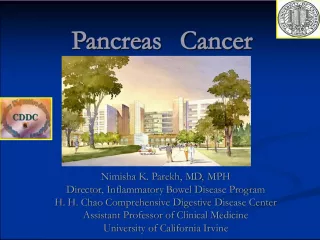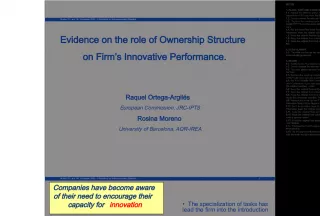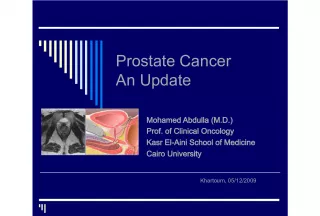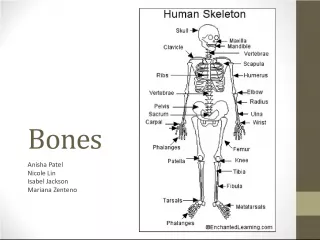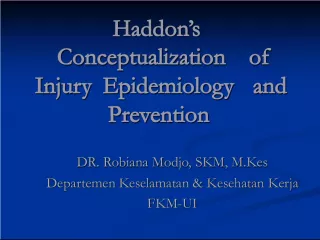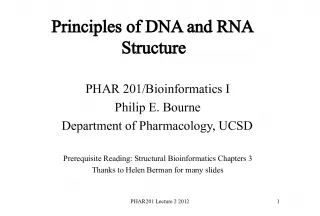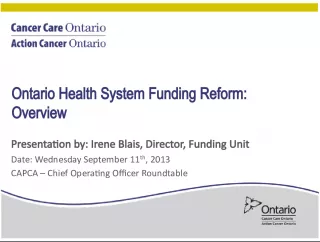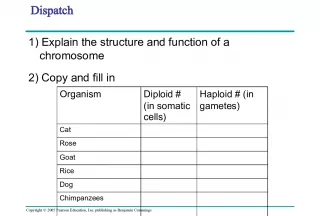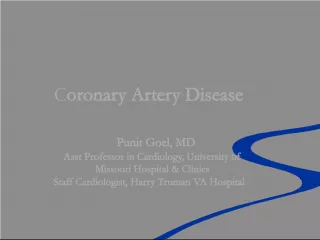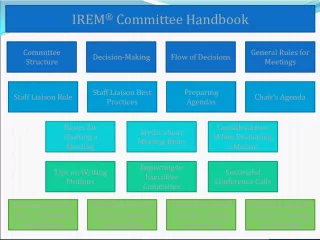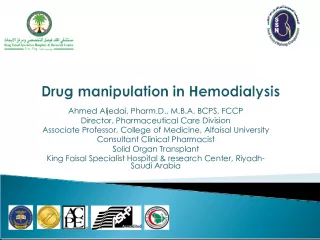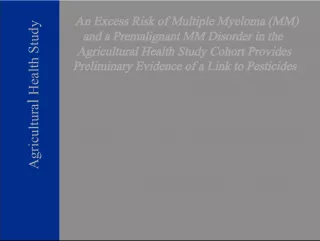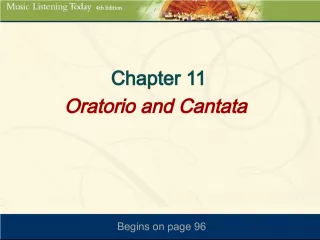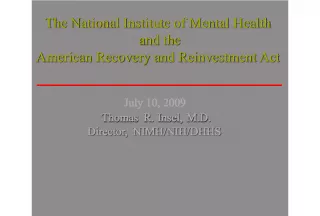Thalidomide: Structure, Pharmacokinetics, and Role in Cancer Prevention
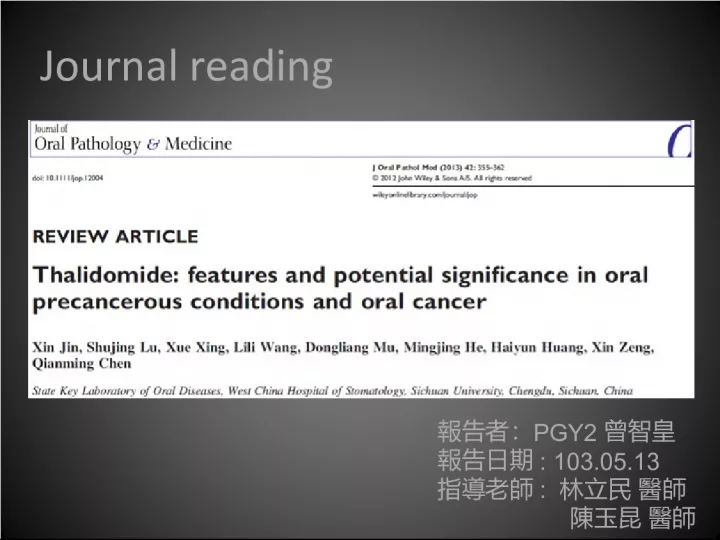

This journal reading focuses on thalidomide, a medication with a controversial history due to its teratogenic effects. The article discusses
- Uploaded on | 1 Views
-
 sandhya
sandhya
About Thalidomide: Structure, Pharmacokinetics, and Role in Cancer Prevention
PowerPoint presentation about 'Thalidomide: Structure, Pharmacokinetics, and Role in Cancer Prevention'. This presentation describes the topic on This journal reading focuses on thalidomide, a medication with a controversial history due to its teratogenic effects. The article discusses. The key topics included in this slideshow are . Download this presentation absolutely free.
Presentation Transcript
Slide1Journal reading報告者: PGY2 曾智皇 報告日期 : 103.05.13 指導老師 : 林立民 醫師 陳玉昆 醫師
Slide21.Introduction 2. Structure and pharmacokinetics of thalidomide 3. Development of thalidomide analogues 4. Role of thalidomide in cancer prevention 5. Thalidomide in the management of the premalignant conditions of oral cavity 6. Potential role of thalidomide in the prevention and management of oral cancer 7. Conclusions
Slide31.Introduction 2. Structure and pharmacokinetics of thalidomide 3. Development of thalidomide analogues 4. Role of thalidomide in cancer prevention 5. Thalidomide in the management of the premalignant conditions of oral cavity 6. Potential role of thalidomide in the prevention and management of oral cancer 7. Conclusions
Slide4Introduction• Oral cancer is a major malignancy leading to great morbidity and mortality rates worldwide in decades • The 5-year survival rate for oral cancer has not improved remarkably over the past several years
Slide5•Angiogenesis and tumour-associated inflammatory response tumorigenesis, aggressive behaviour and metastatic potential of various solid tumours • Thalidomide was introduced in the 1950s by a West German company morning sickness during pregnancy • Quickly overshadowed teratogenic effect (phocomelia)
Slide6•Resurrected for autoimmune or inflammatory basis and cancers erythema nodosum leprosum, pmrigo nodularis, actinic pmrigo, Behcet’s syndrome, graft-versus-host disease, myelodysplastic syndrome, multiple myeloma and some solid tumours • Approved in the USA for cutaneous manifestations of lepromatous leprosy
Slide7•Disorders of oral cavity, such as aphthous stomatitis, Crohn’s disease and HIV-related Kaposi’s sarcoma were sensitive to thalidomide • Its effects on OSCC cells in vitro and in vivo which show that thalidomide might be a potential agent to prevent and treat oral cancer
Slide81.Introduction 2. Structure and pharmacokinetics of thalidomide 3. Development of thalidomide analogues 4. Role of thalidomide in cancer prevention 5. Thalidomide in the management of the premalignant conditions of oral cavity 6. Potential role of thalidomide in the prevention and management of oral cancer 7. Conclusions
Slide9•Known as a-(N-phthalimido) glutarimid • It contains a phthalimide ring and a glutarimide ring with an asymmetric carbon • Racemic mixture of dextrorotatory (R) and levorotatory (S) forms in a ratio of 1:1
Slide10•Thalidomide undergoes rapid spontaneous non-enzymatic hydrolytic degradation in biological fluids • Temperature and pH affect the rate of hydrolysis • Chronic administration not inhibit or stimulate its own metabolism or that of other drugs • Elimination half-life of thalidomide is 4.7 h
Slide111.Introduction 2. Structure and pharmacokinetics of thalidomide 3. Development of thalidomide analogues 4. Role of thalidomide in cancer prevention 5. Thalidomide in the management of the premalignant conditions of oral cavity 6. Potential role of thalidomide in the prevention and management of oral cancer 7. Conclusions
Slide12Development of thalidomideanalogues • Enhanced anticancer activity, while lacking the toxicity of the parent drug • Immunomodulatory drugs (IMiDs) and Selective cytokine inhibitory drugs (SelCIDs) have been regarded as two types of thalidomide analogues
Slide131.Introduction 2. Structure and pharmacokinetics of thalidomide 3. Development of thalidomide analogues 4. Role of thalidomide in cancer prevention 5. Thalidomide in the management of the premalignant conditions of oral cavity 6. Potential role of thalidomide in the prevention and management of oral cancer 7. Conclusions
Slide14Role of thalidomide in cancerprevention Antitumor application • Significant impact on the treatment for non- solid malignancies multiple myeloma and myelodyplastic disorders
Slide15Mechanisms of antitumor activity
Slide161.Introduction 2. Structure and pharmacokinetics of thalidomide 3. Development of thalidomide analogues 4. Role of thalidomide in cancer prevention 5. Thalidomide in the management of the premalignant conditions of oral cavity 6. Potential role of thalidomide in the prevention and management of oral cancer 7. Conclusions
Slide17Oral lichen planusa. Considered as a potentially malignant disease b. Erosive form is more prone to the development of OSCC
Slide19Chronic discoid lupus erythematosusa. A mucocutaneous autoimmune disease b. May develop malignant transformation c. Immunosuppressive activity of thalidomide has been applied to the treatment, especially which insensitive to routine therapy
Slide21•Efficacy of low-dose thalidomide therapy of CDLE alternative choice in cases resistant to the usual treatment • Mechanisms involved in clinical use of thalidomide for OLP and CDLE are still limited its ability to decrease production of TNF-a
Slide221.Introduction 2. Structure and pharmacokinetics of thalidomide 3. Development of thalidomide analogues 4. Role of thalidomide in cancer prevention 5. Thalidomide in the management of the premalignant conditions of oral cavity 6. Potential role of thalidomide in the prevention and management of oral cancer 7. Conclusions
Slide23•The pathogenesis of oral cancer was proved to be impairing T-cell activation and induction of TNF-a anti-angiogenic effects and inhibition of TNF-
Slide24Yang et al 2011 • Effects of thalidomide on cell growth and apoptosis in the human OSCC cell lines CAL27, SCC4 and SCC9 • Thalidomide decreased the viability of CAL27 cells
Slide25•The results of flow cytometric analysis indicated that treatment of OSCC cells for 72 h with 100 g/ml thalidomide induced about 65% apoptosis • After treatment of thalidomide for 24 h in CAL27 and SCC4 cells, expression of TRAIL was markedly increased (5.73-fold)
Slide26Yang et al 2009 (a nimal experiments) • The chemopreventive effect of thalidomide on DMBA-induced oral carcinogenesis in hamsters with respect to angiogenesis
Slide27•Thalidomide significantly decreased the squamous cell carcinoma (SCC) incidence from 57.9% to 11.8% • Thalidomide significantly decreased microvessel density in papilloma and SCC • The gene expression of VEGF and TNF- was down-regulated
Slide28•Thalidomide in combination with chemotherapeutics might be more effective than single use of thalidomide
Slide29Myoung et al 2001 • Studied anti-tumour and anti-angiogenic effect of paclitaxel and thalidomide on the xenotransplanted OSCC of nude mice • Tumor mass reached 300–500 mm3 thalidomide (200 mg/kg) and paclitaxel (13 mg/kg) were administered into the animals tumor volume change was checked
Slide30•Evaluated a. VEGF expression and the expression of its mRNA b. CD31 for vessel density • Thalidomide revealed lowered remarkably VEGF expression and CD31 as well as VEGF mRNA not show significant inhibitory effect on the tumour growth
Slide31•Suggested that Thalidomide use alone is not likely to be effective for the treatment of OSCC Might be regarded as adjuvant chemotherapeutic strategy
Slide32Vasvari et al 2007 • Thalidomide in treatment of a xenotransplant mouse model characteristic for advanced head and neck SCCs • Thalidomide alone was ineffective • A combined treatment with low-dose cisplatin inhibited significant tumour growth, proliferationand angiogenesis
Slide33•Up to date, no clinical trial has assessed the effect of thalidomide alone or combination with other chemotherapeutics in the treatment for oral cancer • The studies have given us the hint of its anticancer potential
Slide341.Introduction 2. Structure and pharmacokinetics of thalidomide 3. Development of thalidomide analogues 4. Role of thalidomide in cancer prevention 5. Thalidomide in the management of the premalignant conditions of oral cavity 6. Potential role of thalidomide in the prevention and management of oral cancer 7. Conclusions
Slide35•Potential therapeutic effects of thalidomide in OLP and CDLE have been verified by clinical trials • Increasing evidences from in vitro and in vivo experiments show that thalidomide is a potential anticancerous agent for oral cancer
Slide36•Certain problems that deserve further investigation 1. The number and sample size of present clinical researches are too small to powerful support 2. No clinical trial oral cancer has been available
Slide373. The tolerable level and time should be well considered 4. The mechanisms involved in the therapeutic effects of thalidomide, as well as drug combination for oral diseases discussed above are still unclear
Slide38Thank you for yourattention


